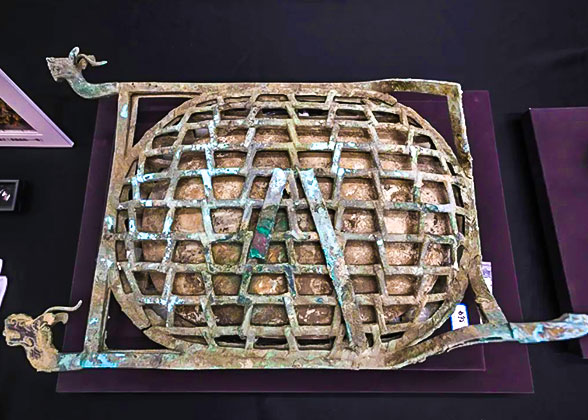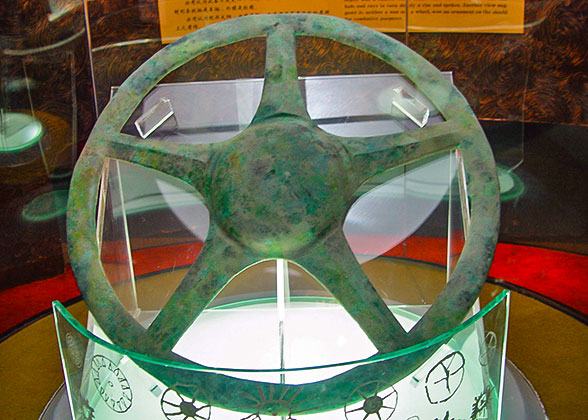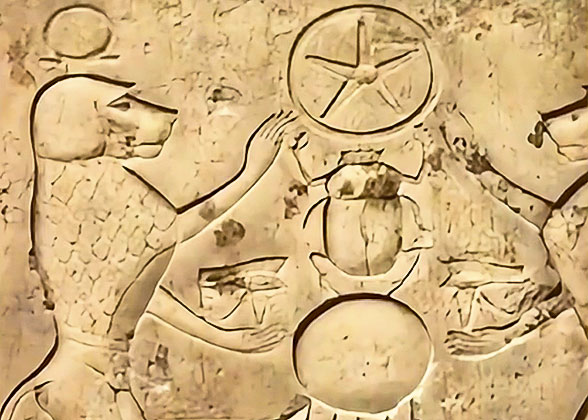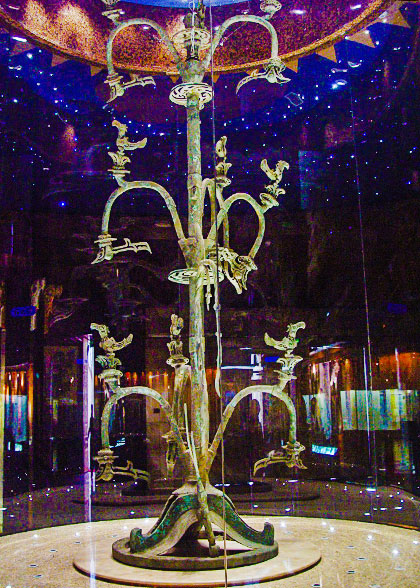World’s Welding History Advanced for 2,000 Years by a Sanxingdui Archeological Discovery
Published: Jan. 05, 2024
Sanxingdui Site, about 40 kilometers (25 miles) north of Chengdu City in southwest China, is the representative of ancient Sichuan civilization dating back to 2,600-4,800 years ago. Since its discovery in 1929, over 13,000 pieces of bronze wares, jade wares, gold wares and pottery wares have been dug out. Many of the excavations are in unique shapes, giving people completely different impressions on Chinese civilization; and many of the archaeological discoveries are subversive, which even lead to the rewrite of history books.
Latest Discovery of Bronze Welding Technique at Sanxingdui
 |
A latest historical discovery at Sanxingdui Site is bronze welding technique. With the help of X-rays, researchers found the traces of welding on a turtle shell-like bronze ware with crisscross patterns.
According to the previous discoveries in China, the adoption of welding technique was much later than Sanxingdui Era. Globally, as one of the basic technologies of modern manufacturing, the origin of modern welding technique is the carbon arc welding back to 1885 the earliest.
Shockingly, the discovery of welding traces on the bronze article directly pushed the history of welding technology forward 2,000 years.
Unsolved Mystery behind the Bronze Welding Technique
Actually, it is not an easy thing to weld the bronze pieces together even today. In 1990s, Japanese wanted to make a replica of the Holy Bronze Tree dug out from Sanxingdui but failed. One of the key reasons is that the melted bronze cools down and solidifies too fast, giving craftsmen no time to weld the different pieces together.
How did Sanxingdui people do that? After research, people found a special chemical element in the bronze wares of Sanxingdui – phosphorus, which can help speed up the flowing of bronze liquid and slow down its solidification.
But another question arose. Phosphorus was not discovered until 17th century by German Hennig Brand. How and where did Sanxingdui artists get it? It still remains unknown.
Other Major Discoveries in Sanxingdui
1. Bronze Sun Wheel
Although called Sun Wheel, it looks more like present steering wheel. What makes it unique is that it has a similar appearance with the religious item in the ancient Egyptian murals. Is it a pure coincidence or is there a story behind but unknown by present people?
|
|
2. Bronze Holy Trees
There are 8 of them and the restored one is 396cm (119 in) high. If counting in the lost top parts, it may reach 5 meters (16.4 feet). It is considered as a religious tool for ancient Sanxingdui people to communicate with the gods.
3. Bronze Standing Human Figure
The bronze figure itself is 180cm (71in), with a base, or more likely an altar or a sacred mountain of 80.8cm (31.8in), making it the world’s highest and most complete bronze standing human figure.
|
|
4. Bronze Human Heads with Golden Masks
The hairstyles of these human heads are very different from those in central China, showing featured Sichuan style back then. Their golden masks are elaborately crafted, giving solemn and holy feelings.



